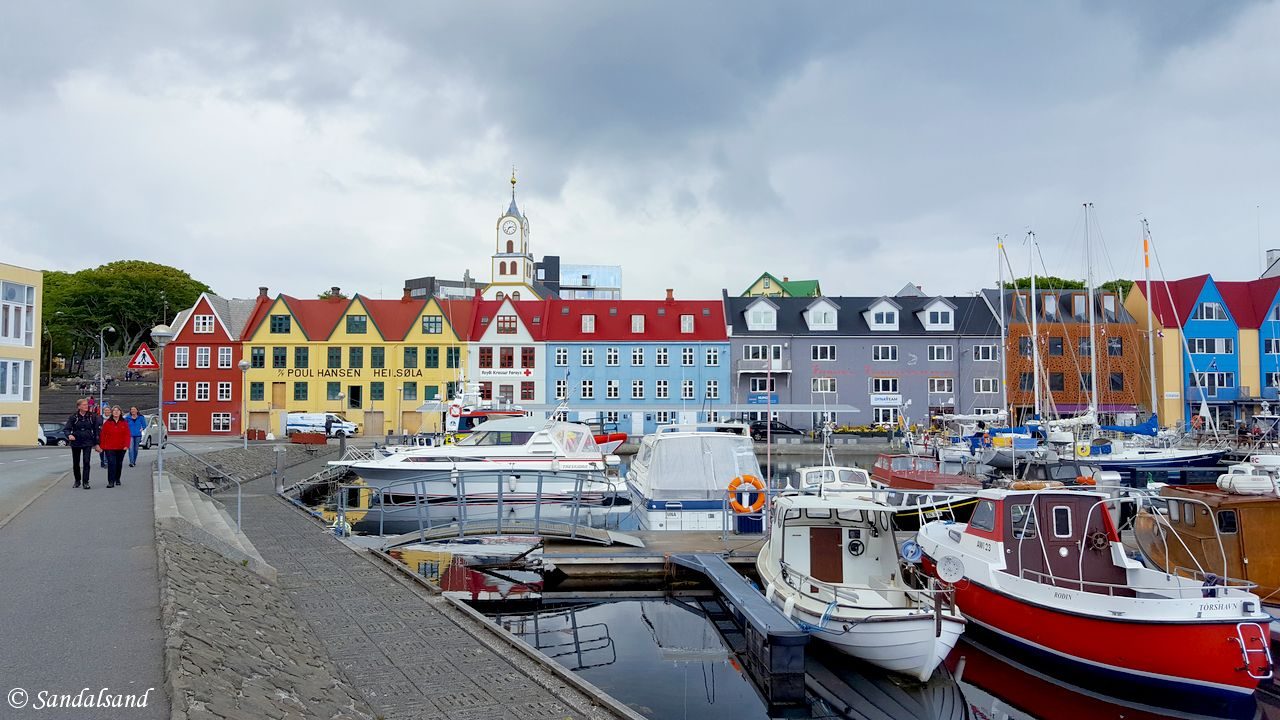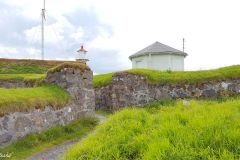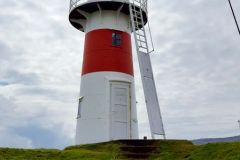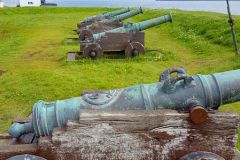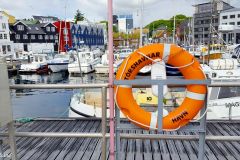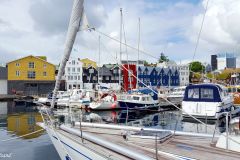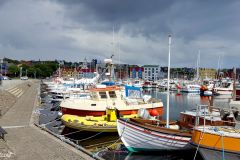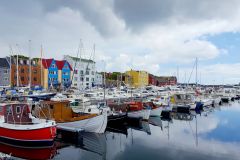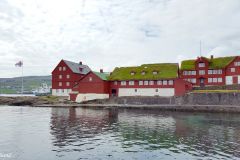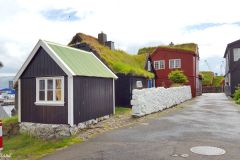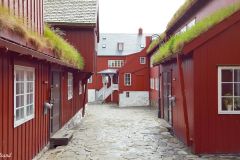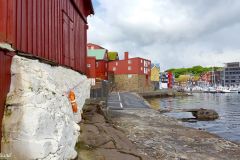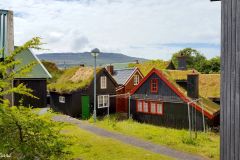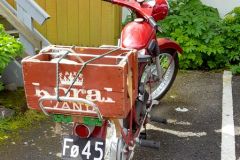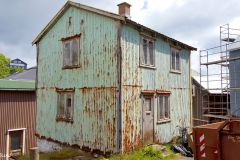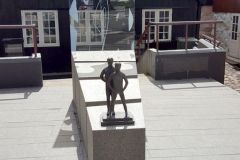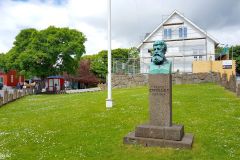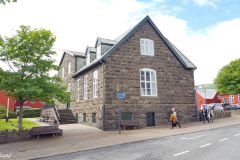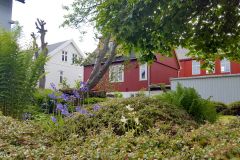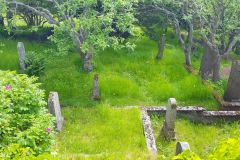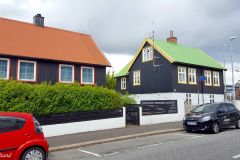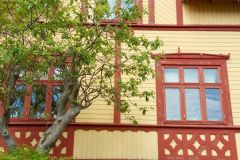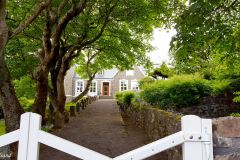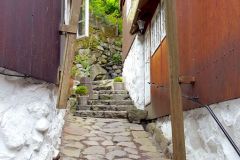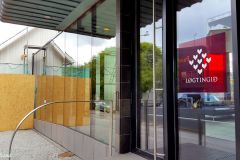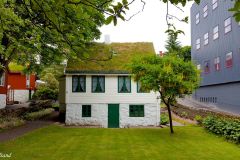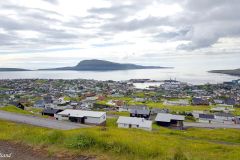Most of the interesting parts of Tórshavn are reachable on foot, traffic is light, and the quaint old atmosphere of the downtown area makes for easy and interesting walks and exploration.
Layout and history
Geographically Tórshavn is located in the centre of the archipelago although at the southern end of major islands where most of the population live. The old centre stretches for a few hundred metres up from the harbours, continues on more levelled land before ending with new residential houses up the naked moorland hills surrounding it on three sides. About a third of the country’s population of 50,000 lives in Tórshavn, counting between 13,000 and 19,000 depending on what one considers part of the urban area.
After Norse immigrants began to settle on the Faroes towards the end of the Viking Age, Kirkjubøur across the mountain to the west became for centuries the ecclesiastical and cultural centre. Tórshavn has on the other hand always been the political and commercial centre of the country. The predominantly Norwegian immigrants soon set up a parliament, a ting, at the Tinganes peninsula dividing the two small harbours. The kings of Norway and later the union of Denmark-Norway granted trading rights to Tórshavn, as the sole port in the Faroes, securing growth and prosperity for the population – or at least some members of it.
The development of Tórshavn did not go fast. By 1584 Tórshavn had 101 inhabitants and by the early 1700s it had grown to only about 600. By 1856 the city’s trade monopoly was lifted but it managed the transition well and the population began to grow more rapidly.
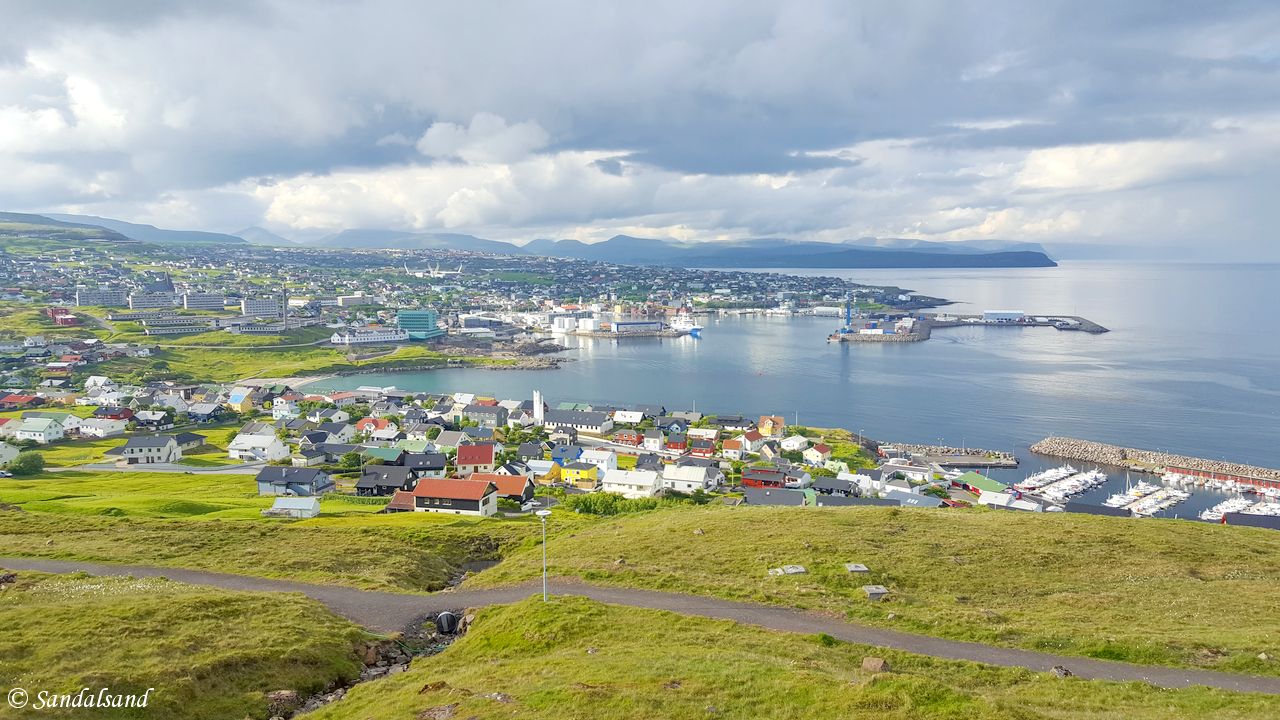
View of Tórshavn from the east. The urban structure is spreading unevenly out from the old core, basically villas. The old town is located in the middle of this picture, hidden by more recent port development.
Skansin
Skansin is a small fortress on the east side of the harbour. From the top one gets a nice view south towards Nólsoy island and the centre of Tórshavn which spreads out like a fan behind the fortress. There are walls to climb, WW2 and older guns to see and a lighthouse on top. The fort dates back to around 1580 and was initially built to defend the settlement against pirates. It was expanded considerably in 1780 and later years.
The harbour area
Now, facing Tórshavn we first notice the modern terminal directly beneath Skansin. This is were the ferries between Denmark and Iceland arrive and depart. Closer still to the centre is the little East Harbour (Eystaravág). It is separated from the larger West Harbour (Vestaravág) by the Tinganes peninsula. Both harbours are filled with light vessels and lined by colourful buildings. From the seafront the nice little centre of Tórshavn rises gradually uphill to hills and valleys at the far end.
Tinganes
Political considerations and debates have taken place on the barren rocks of Tinganes since the early or mid-9th century AD. As a meeting point for free men of the Faroes trade began to flourish alongside the negotiations. The parliament (Løgting) was moved uptown in 1856, however government agencies are still located in some buildings at Tinganes. Here they are side by side with residential buildings. The turf-roofed, red or black-painted buildings at Tinganes make it a compulsory part of your visit to the Faroes.
Moving in from the harbour
Most of the interesting and picturesque places are located within 200 metres from the harbours. You will find a string of very interesting buildings (and bars and restaurants) at the end of the Eystaravág especially. In between you will find the Cathedral and the Trappan – a terraced-like place to sit down for an ice-cream. Further on up the streets you will soon find the Town Hall made of Faroese basalt rock. Across the road is the modest Løgting (parliament) building on the Faroese version of Capitol Hill. (It has a modern and much larger extension next to it.)
When you continue you will find the main shopping street, Niels Finsens gøta. Do not continue for long because there is really not too much to discover. I walked up to the Vesturkirkjan, a triangularly shaped church easily seen from the centre. It looks best from a distance.
Apart from this: Take it easy and say hello to the locals. They are civilised and speak English quite well!
Outside the downtown area
There are three notable institutions located 1-3 km outside the downtown area.
The Nordic House (Norðurlandahúsið í Føroyum) is a cultural institution under the auspices of the Nordic Council of Ministers. The house is active as a Nordic cultural venue with a diverse programme activity. This includes all art forms. They target all age and interest groups. Arriving here in the evening I only had the opportunity to admire the architecture and peer through the large windows.
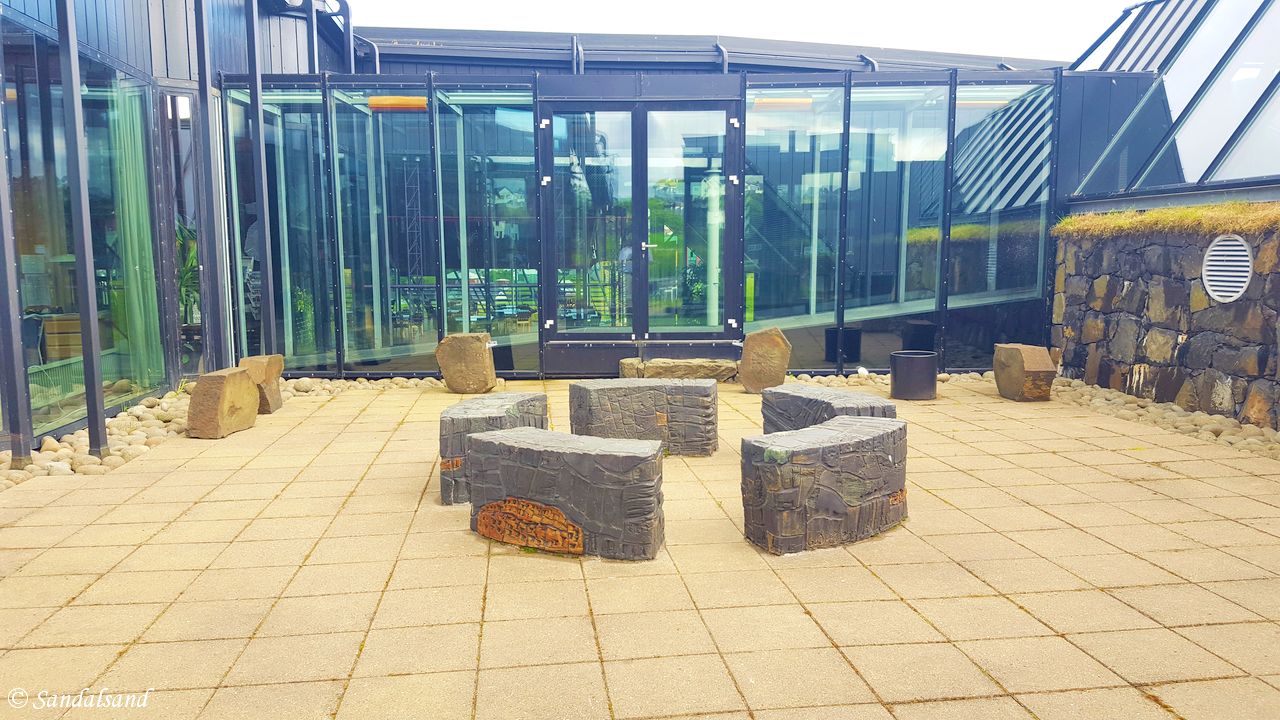
The Nordic House – Nordurlandahusit
National Museum – culture and nature (Føroya Fornminnisavn) is a permanent exhibition about Faroese natural and cultural history, and includes sections from geology, botany, zoology, archaeology, folk-life, and history. Somewhat cryptic the museum describes itself like this: “Nothing in nature or culture is static. Nature affects culture, and culture affects nature. New knowledge and scientific results come into sight, and the exhibit is therefore a process.” I never got the opportunity to decipher this statement because I arrived at the door outside opening hours.
The National Gallery (Listasavn Føroya) houses a collection of 2600 mainly Faroese works of art, collected from the 1940s and onward by the Faroe Islands Art Society and the government. This too is a place I will need to seek out next time I come to the Faroes. There is a very nice park, Viðarlundin Park, right next to the art gallery. The park contains some of the gallery’s sculptures.
What to explore on the Faroes?
The map below is to be explored. You may zoom in and out, click the markers for some more information. I made it before going to the islands. Then I added more sites and attractions as my four days and nights in 2016 went by.
Find lexical information about the archipelago on Wikipedia. Tourist information is available at Visit Faroe Islands, Faroe Islands Tourist Guide, and on international websites like Lonely Planet and Wikitravel. Find a more detailed description of a walk in Tórshavn here.
This series from the Faroe Islands consists of several posts.
(1) Introduction
(2) Tórshavn, the nicest little capital in the world (THIS)
(3) Medieval Faroese history at Kirkjubøur
(4) A boat trip to Hestur, Koltur and a concert in the caves
(5) Attractions on Eysteroy, Borðoy and Viðoy islands
(6) Attractions on Streymey and Vágar islands
There is also a video from this visit in 2016.

